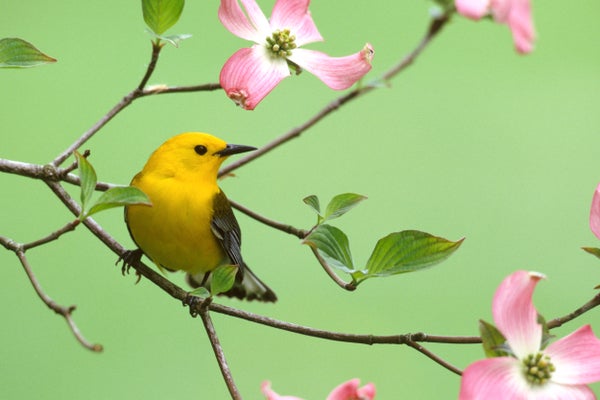Plants, and the insects which rely on them, are the living foundations of our planet. But these foundations are under stress because, as we urbanize and suburbanize natural areas, we have an unfortunate tendency to sterilize the landscape. Fields and forests are replaced with biological deserts made up of millions of acres of concrete, lawns and an array of ornamental trees and shrubs imported from around the world. Adding to the problem, our obsession with perfection leads us to spray pesticides liberally.
These actions are part of the reason global biodiversity is crashing. There are over three billion fewer wild birds in North America than there were in 1970. This past summer saw at least tens of thousands of migrating birds drop dead from the sky over the Southwest. Amphibian and reptile populations are in a free fall across the planet. Recent research shows that insect numbers, even in nature reserves, have plummeted by orders of magnitude, and 40 percent of all insect species may be extinct within a few decades. This is bleak news, and while the reasons for some of these declines are complicated, there are actions we can take to help bring at least some species back.
The first step is to redefine our concept of “garden” to include more than just plants. We need to intentionally share our space, and not just with the birds, bees and butterflies that visit our flowers, but also with the less charismatic nonpollinators, the little insects that may eat a portion (very rarely all) of our plants. Holes made by bugs in leaves are a sign of life and like a dinner bell for birds and other animals. We need to see the plants in our gardens as part of nature and not just exterior decoration to be kept as pristine as possible. Therefore, we must limit pesticide use. It’s crucial to support nature’s resurgence, and it’s much better for everyone: no doctor has ever recommended long-term exposure to pesticides.
On supporting science journalism
If you're enjoying this article, consider supporting our award-winning journalism by subscribing. By purchasing a subscription you are helping to ensure the future of impactful stories about the discoveries and ideas shaping our world today.
Too many of the exotic plants sold in nurseries are essentially inedible to most native animals. A movement has begun to turn the tide and bring natives back, but this push to restore is coming up against droves of drought-tolerant exotic plants that are still being touted for arid climates. Unfortunately, this kaleidoscope of alien plants brought in from across the planet is being passed off as ecofriendly. Mostly they’re not. Yes, you’re saving water over planting thirsty ornamentals or a lawn, but drought-tolerant exotic plants can become invasive disasters when they escape our yards. Helping the environment can be about more than saving water. Even in drier areas, like the American West, the selection of attractive native plants to choose from is vast. If dry is your style, there are native succulents, and a vast array of wildflowers, flowering bushes and trees that can meet any aesthetic allowing you to save water and nature.
Challenges like climate change, invasive species and habitat destruction are pushing native ecosystems to brink, making urban and suburban space potentially critical for many species. But xeriscapes leave many gardeners thirsting for green, and there’s an important alternative that has been largely ignored. For those disenchanted with dry landscaping, using underappreciated and lush water-loving native plants to make your garden a real-life oasis could lifesaving to wildlife.
In nature, this unsung group of native plants is limited to riparian zones, the narrow strips of green along water bodies, but these moist habitats provide a disproportionate abundance of food and shelter for creatures that exist nowhere else. If consumers demand them, nurseries will increasingly carry these riparian species, and the presence of such plants in the garden will provide a smorgasbord for many animals including not just butterflies and their kin but also colorful birds like tanagers, warblers and vireos that depend on arthropods fostered by these plants.
No doubt, drought-tolerant oaks are great, but other native trees that need a bit of water like local species of willow, cottonwood and maple also support a kaleidoscope of life; shrubs like hazelnut, dogwood and native azaleas match exotics with spring flowers and blazing fall colors. These verdant plants depend on some water year-round, though, importantly, not more water than the array of exotic ornamentals currently dominating our gardens and landscapes. With some water, they will thrive and support far more nature than the sterile exotics they’ve replaced.
The ideal garden would offer a combination of drought-tolerant native plants and a few species that need a little more water, providing a feast of options for little guests and the bigger ones that will come to eat them. Even starting slow helps—a single primrose in a pot on a balcony is a rest stop for hungry bees; but we should all opt for as many natives as possible, and as more creatures stop by to share our yards, we will be making nature, and us all, a little healthier. In much of the United States, especially the drier regions, winter is the planting season, and we could be making the best of COVID-19 quarantines to do something positive for nature and ourselves.
